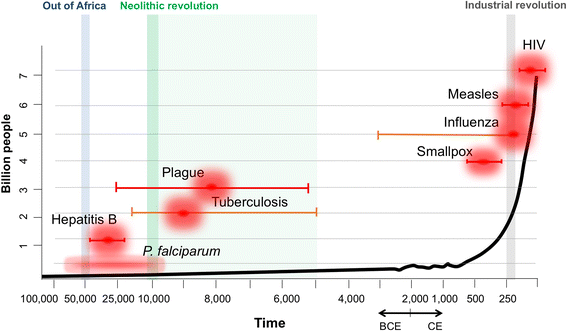Q&A: What are pathogens, and what have they done to and for us?
- PMID: 29052511
- PMCID: PMC5648414
- DOI: 10.1186/s12915-017-0433-z
Q&A: What are pathogens, and what have they done to and for us?
Abstract
Microbes are found on us, within us and around us. They inhabit virtually every environment on the planet and the bacteria carried by an average human, mostly in their gut, outnumber human cells. The vast majority of microbes are harmless to us, and many play essential roles in plant, animal and human health. Others, however, are either obligate or facultative pathogens exerting a spectrum of deleterious effects on their hosts. Infectious diseases have historically represented the most common cause of death in humans until recently, exceeding by far the toll taken by wars or famines. From the dawn of humanity and throughout history, infectious diseases have shaped human evolution, demography, migrations and history.
Conflict of interest statement
Publisher’s Note
Springer Nature remains neutral with regard to jurisdictional claims in published maps and institutional affiliations.
Figures

References
-
- Microbiology by numbers. Nat Rev Microbiol. 2011;9(9):628. - PubMed
Publication types
MeSH terms
Grants and funding
LinkOut - more resources
Full Text Sources
Other Literature Sources
Medical

